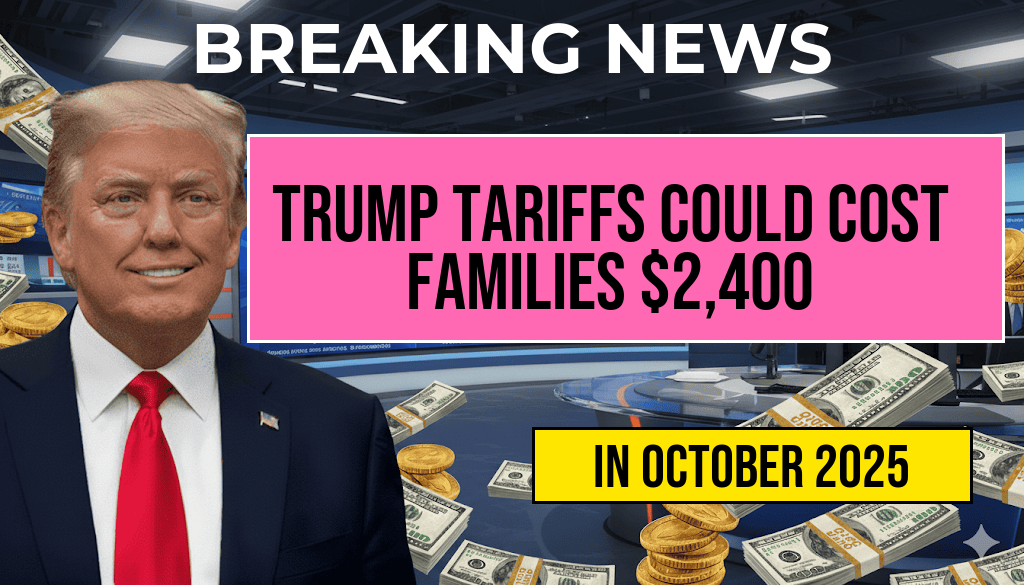Recent analyses suggest that ongoing trade policies and tariffs implemented under the Trump administration could lead to an increase of approximately $2,400 annually in expenses for the typical American family. This phenomenon, often referred to as the “Turbulence Tax,” represents the hidden costs embedded within the complex web of tariffs, trade disruptions, and supply chain adjustments. While tariffs are publicly justified as measures to protect domestic industries, their ripple effects extend far beyond the factory floor, impacting consumer prices, employment stability, and overall economic well-being. As households face rising costs at grocery stores, hardware outlets, and online retailers, understanding the true scope of these tariffs becomes essential for assessing their long-term implications on family budgets and economic resilience.
The Mechanics Behind the “Turbulence Tax”
Tariffs are taxes imposed by the government on imported goods, aiming to make foreign products more expensive and bolster domestic manufacturing. However, these levies often result in increased prices for consumers, as businesses pass on the additional costs. The “Turbulence Tax” is a colloquial term used to describe the cumulative financial burden that arises from such tariffs, which can lead to higher prices across a broad range of commonly purchased items.
How Tariffs Impact Household Expenses
- Increased retail prices: Tariffs on imported goods such as electronics, clothing, and household items often lead to marked price hikes.
- Higher transportation costs: Disruptions in global supply chains can increase shipping expenses, further inflating retail prices.
- Reduced product availability: Tariffs can lead to shortages or delays, prompting consumers to pay more for alternatives.
Estimating the Financial Impact on Families
| Category | Additional Cost per Year |
|---|---|
| Groceries (imported food products) | $800 |
| Electronics and appliances | $700 |
| Clothing and apparel | $500 |
| General household goods | $400 |
When these figures are combined, the total additional annual expenditure on average for a household can approach $2,400. This estimate aligns with recent consumer price index (CPI) data and analyses by economic think tanks, which highlight the broader inflationary pressures linked to trade policies.
Broader Economic and Social Consequences
Beyond the immediate impact on family budgets, tariffs influence employment trends, manufacturing competitiveness, and global trade relationships. Small businesses, in particular, bear the brunt of increased input costs, which can lead to layoffs or reduced hiring. Moreover, retaliatory tariffs from trading partners may further escalate costs, creating a cycle of economic turbulence that hampers overall growth.
Effect on Consumer Confidence and Spending
- Decreased purchasing power: As prices rise, households may cut back on discretionary spending, slowing economic activity.
- Shift in shopping habits: Consumers might seek alternatives, such as domestically produced goods or online marketplaces with lower tariffs.
- Impact on savings and investment: Rising costs can divert household finances from savings to cover essential expenses, affecting long-term financial stability.
Policy Debates and Future Outlook
Legislators and economic analysts continue to debate the efficacy of tariffs as a tool for national economic strategy. While some advocate for protectionist measures to support domestic industries, critics highlight the unintended financial burdens placed on consumers. The “Turbulence Tax” exemplifies how well-intentioned policies can produce unforeseen economic costs that ripple through household budgets and national growth. As trade negotiations and policy decisions evolve, consumers are urged to stay informed about potential price shifts and consider strategies to mitigate these impacts.
Resources for Consumers and Policymakers
As the nation grapples with the economic implications of trade policies, understanding the true costs embedded within tariffs remains crucial for making informed financial decisions and advocating for balanced trade strategies that support both domestic industries and consumer welfare.
Frequently Asked Questions
What are the Trump tariffs and how do they impact families?
The Trump tariffs are tariffs imposed on imported goods during the Trump administration, which can increase the cost of products for consumers. This can lead to higher expenses for families, adding approximately $2,400 annually to their household budgets, as detailed in the article.
What is the ‘Turbulence Tax’ and why is it called that?
The ‘Turbulence Tax’ refers to the hidden costs and economic instability caused by tariffs and trade disruptions. It is called a ‘tax’ because it effectively raises prices and reduces economic efficiency, impacting families financially over time.
How do tariffs specifically increase the cost of everyday goods?
Tariffs on imported goods lead to higher manufacturing costs, which are often passed down to consumers. This results in increased prices for everyday items such as electronics, clothing, and appliances, contributing to the additional $2,400 annual expense for families.
Are there any long-term economic effects of these tariffs on families?
Yes, long-term effects include reduced consumer purchasing power, potential job market shifts, and increased living costs. These factors collectively contribute to the additional financial burden on families over time.
What strategies can families use to mitigate the impact of tariffs and the ‘Turbulence Tax’?
Families can consider alternatives such as shopping for domestic products, bulk purchasing, or adjusting their budgets to account for higher prices. Staying informed about trade policies can also help families plan and minimize the financial impact of tariffs.

Leave a Reply